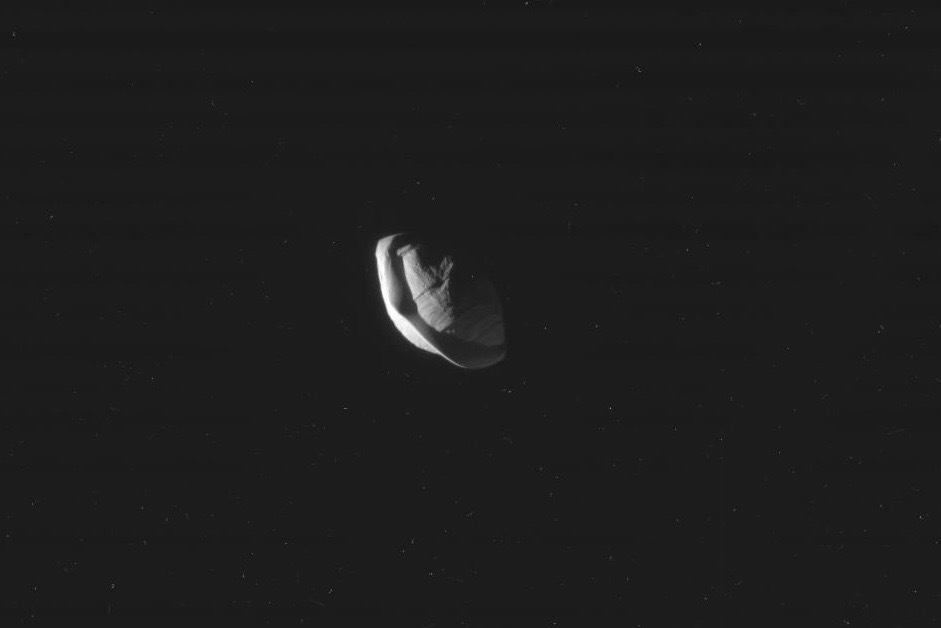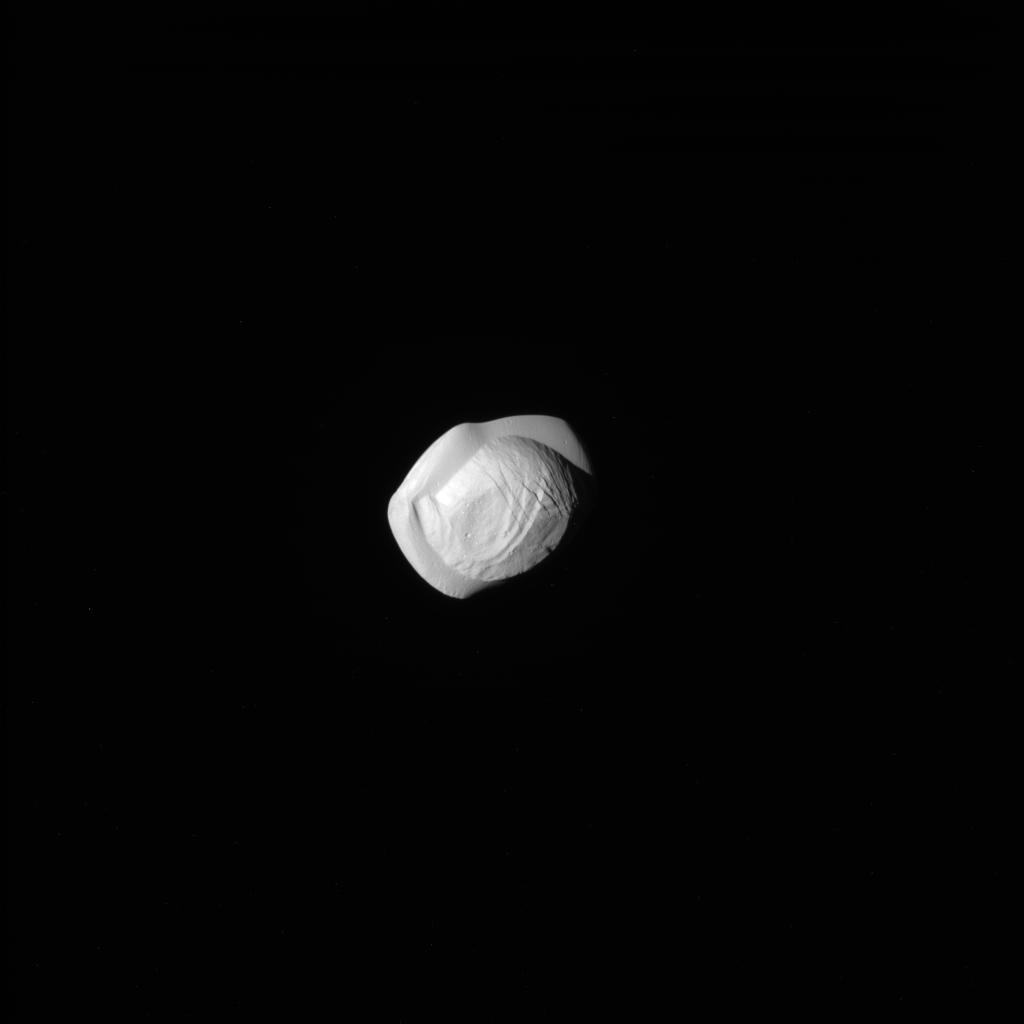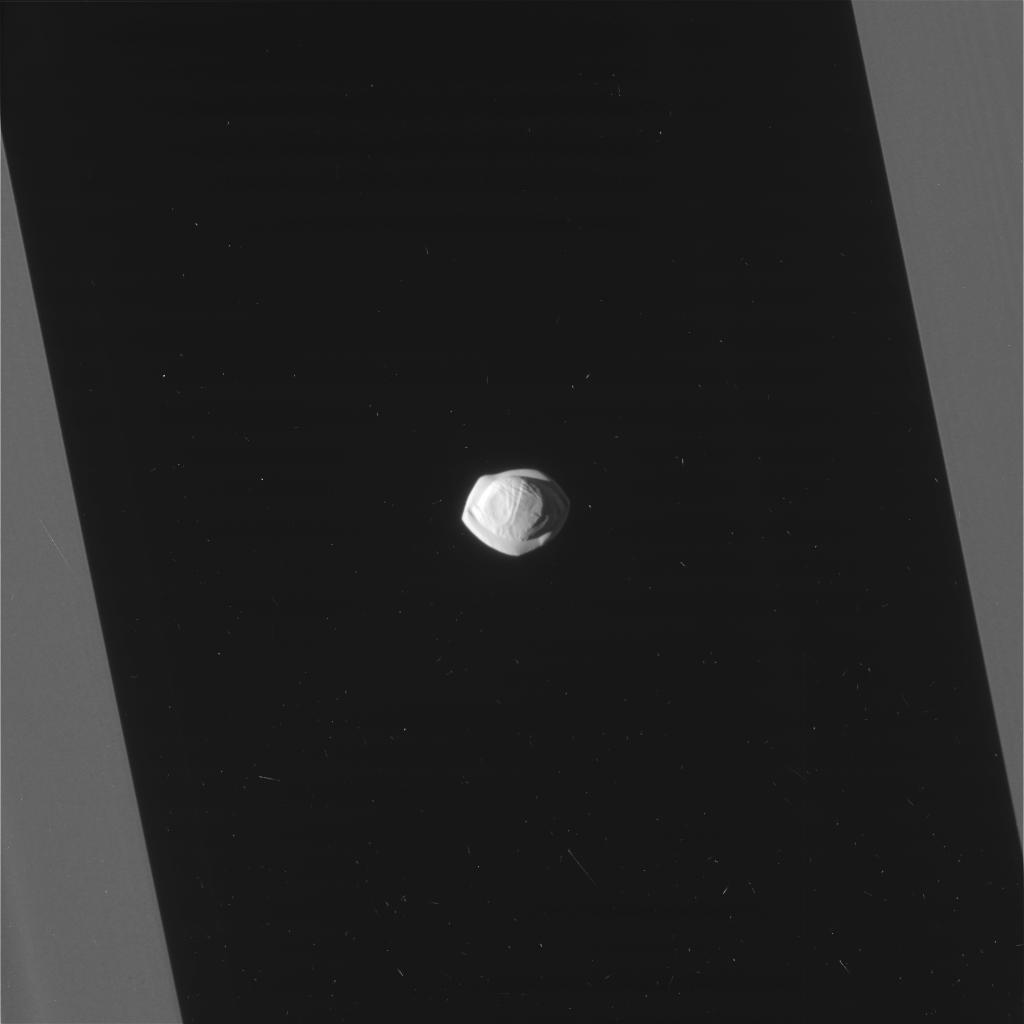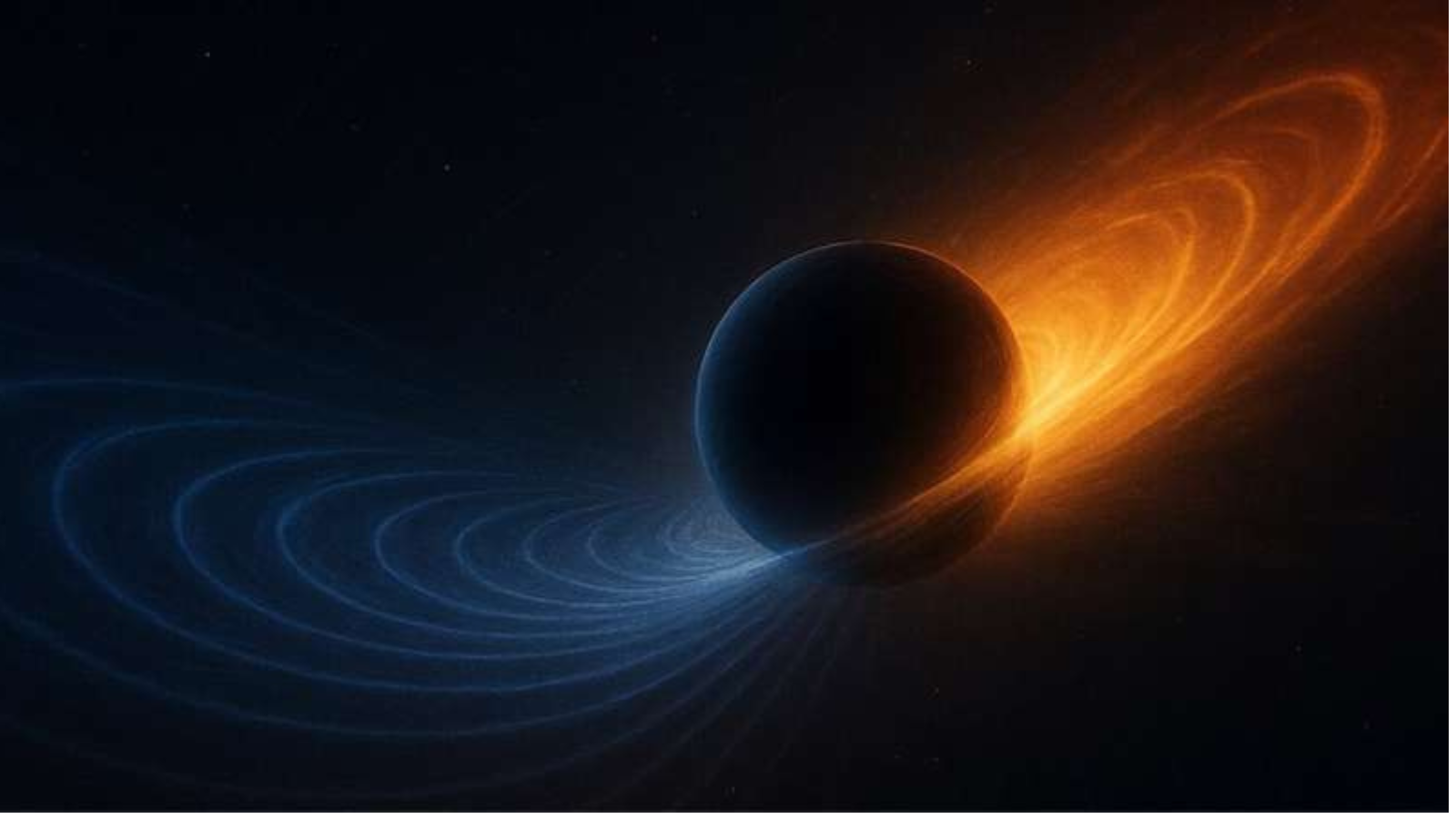Space Ravioli! Odd Shape of Saturn's 'Flying Saucer' Moon Pan Revealed

Saturn's moon Pan bears a striking resemblance to a dumpling, new photos by NASA's Cassini spacecraft reveal.
Cassini captured the images on March 7, during a flyby that brought the probe within 15,268 miles (24,572 kilometers) of the 22-mile-wide (35 km) Pan.
"These images are the closest images ever taken of Pan and will help to characterize its shape and geology," NASA officials wrote in a brief description of the photos, which were released Thursday (March 9). [In Photos: Amazing Color Maps of Saturn's Moons]

Pan isn't the only one of Saturn's more than 60 known moons with an odd appearance. For example, like Pan, the 910-mile-wide (1,470 km) Iapetus has an equatorial ridge, and as a result, it looks like a giant space walnut.
And Mimas, which is about 245 miles (395 km) in diameter, looks an awful lot like the Death Star from the "Star Wars" films, thanks to a giant crater that's about one-third as wide as the moon itself.
Saturn's moons have been full of surprises in other ways as well. The gigantic Titan, for instance, is the only solar system body other than Earth known to harbor stable bodies of liquid on its surface. But Titan's lakes and seas are full of hydrocarbons, not water.
And the Saturn satellite Enceladus harbors an ocean of liquid water beneath its icy shell — a potentially habitable environment that astrobiologists would love to sample. And a spacecraft could do just that without even touching down, because geysers near Enceladus' south pole blast water vapor, organic molecules and other material from the subsurface ocean out into space.
Breaking space news, the latest updates on rocket launches, skywatching events and more!

Cassini has helped lift the veil on these miniworlds. The orbiter — the heart of the $3.2 billion Cassini-Huygens mission, a joint effort of NASA, the European Space Agency and the Italian Space Agency — arrived at Saturn in July 2004 and has been studying the planet, its rings and its moons ever since.
That work will soon come to an end. Next month, Cassini will enter the "Grand Finale" phase of its mission, which consists of 22 orbits between Saturn's cloud tops and the planet's innermost ring. Finally, on Sept. 15, the spacecraft will plunge intentionally into Saturn's atmosphere, in a death dive designed to ensure that the mission doesn't contaminate Titan or Enceladus with microbes from Earth.
Follow Mike Wall on Twitter @michaeldwall and Google+. Follow us @Spacedotcom, Facebook or Google+. Originally published on Space.com.
Join our Space Forums to keep talking space on the latest missions, night sky and more! And if you have a news tip, correction or comment, let us know at: community@space.com.

Michael Wall is a Senior Space Writer with Space.com and joined the team in 2010. He primarily covers exoplanets, spaceflight and military space, but has been known to dabble in the space art beat. His book about the search for alien life, "Out There," was published on Nov. 13, 2018. Before becoming a science writer, Michael worked as a herpetologist and wildlife biologist. He has a Ph.D. in evolutionary biology from the University of Sydney, Australia, a bachelor's degree from the University of Arizona, and a graduate certificate in science writing from the University of California, Santa Cruz. To find out what his latest project is, you can follow Michael on Twitter.
